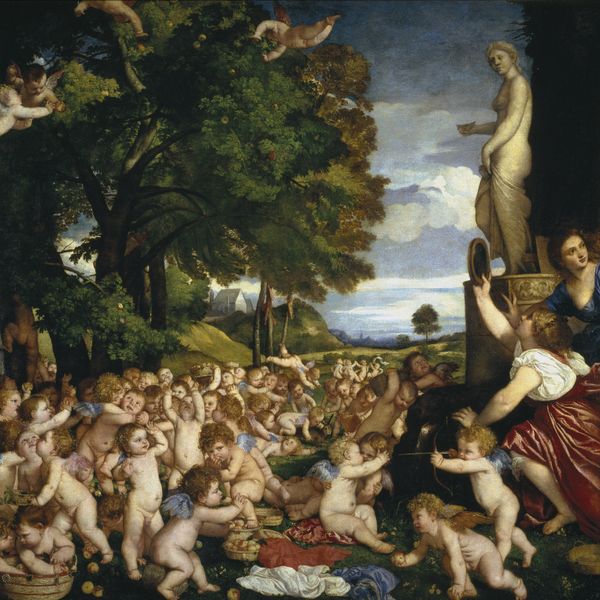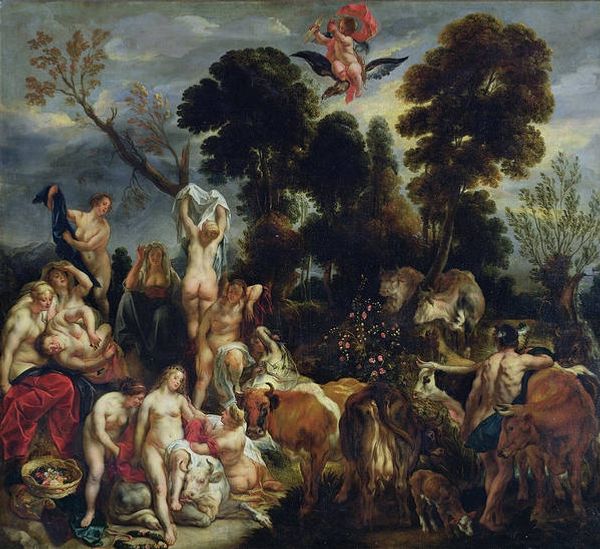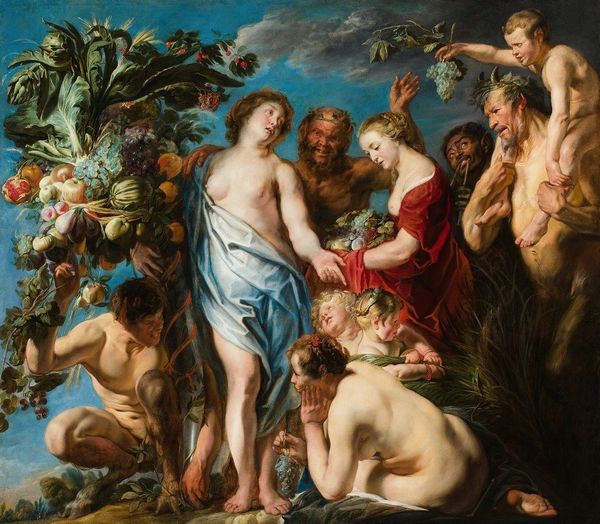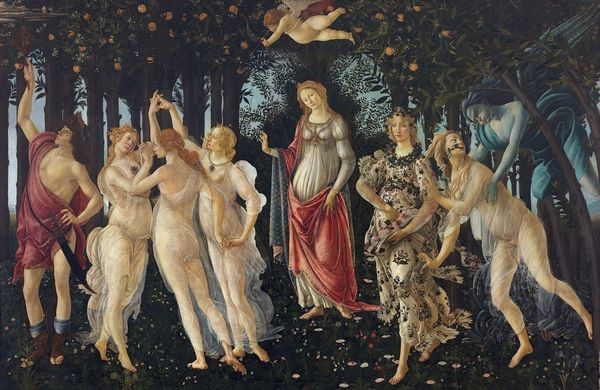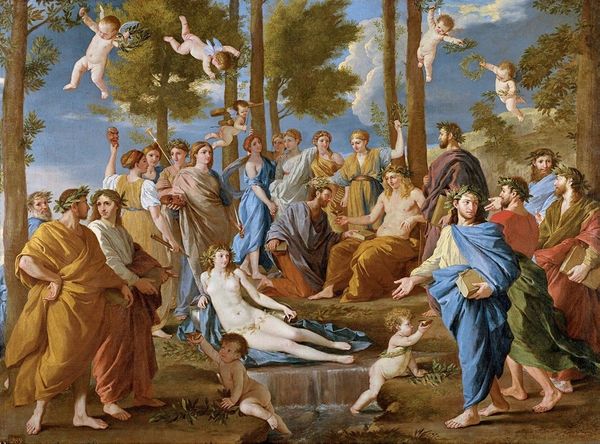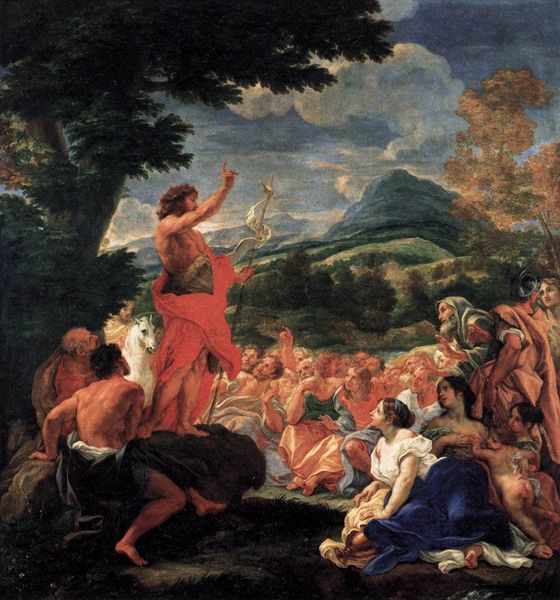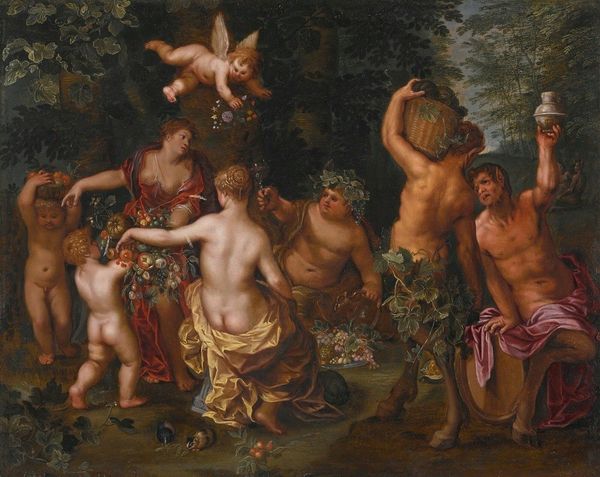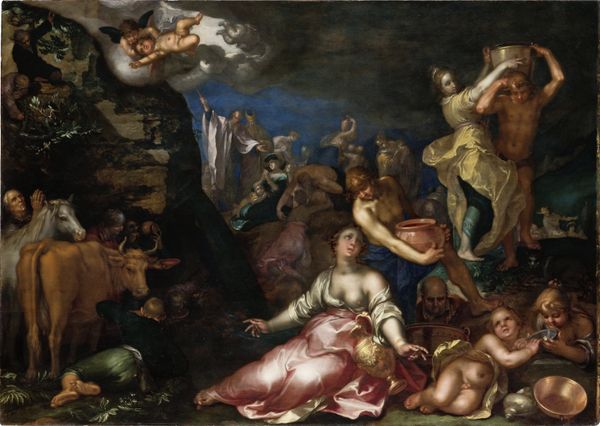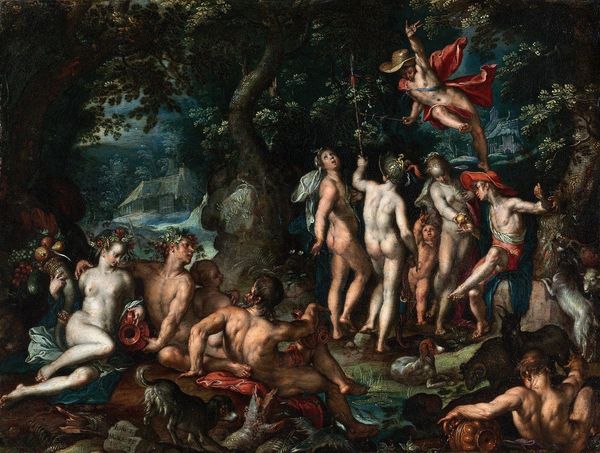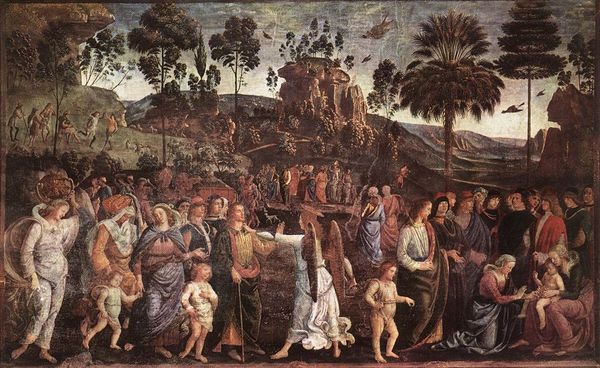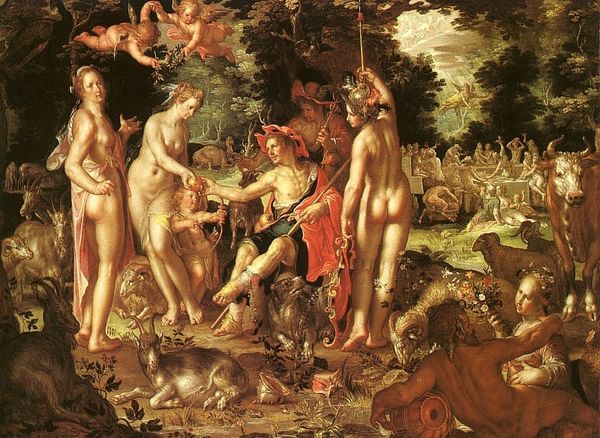
oil-paint
#
allegory
#
baroque
#
oil-paint
#
landscape
#
figuration
#
11_renaissance
#
oil painting
#
mythology
#
genre-painting
#
history-painting
Copyright: Public Domain: Artvee
Editor: Here we have Jan Brueghel the Younger’s “The Marriage of Peleus and Thetis,” created between 1583 and 1625, using oil paint. It's quite a busy composition! So many figures in a lush landscape, almost overwhelmingly joyful. What do you see in this piece, focusing on its form? Curator: Its formal elements immediately present a dynamic interplay between foreground and background. Note how Brueghel employs a carefully constructed color palette to guide the eye. Observe the cool, verdant hues of the landscape against the warmer, flesh tones of the figures. Consider the composition: how the artist uses a multitude of figures to create depth and movement, leading our gaze toward the wedding feast. The painting operates within a semiotic system where gestures and arrangements carry layers of meaning. How might we interpret the significance of this dense figuration? Editor: I see it! The sheer number of bodies creates this sense of abundance and maybe chaos, fitting for a wedding celebration, I suppose. It's like the eye can't settle anywhere specific. Curator: Precisely! And this effect contributes directly to the overall expression. Look closely at the impasto technique. Notice the texture of the oil paint itself. Brueghel uses varied brushstrokes to depict different materials – the smooth skin of the gods, the rough bark of the trees, and the shimmering fabrics. The surface of the canvas becomes an arena of textures and light effects. These choices aren't accidental. How do you believe these deliberate textural contrasts shape the overall viewing experience? Editor: They add another layer of visual interest. Now that you point it out, the textural contrast enhances the details of the individual figures. This deeper understanding is useful for my own approach to analyzing form. Curator: Indeed. Brueghel demonstrates how material handling directly informs our aesthetic appreciation and interpretation.
Comments
No comments
Be the first to comment and join the conversation on the ultimate creative platform.
